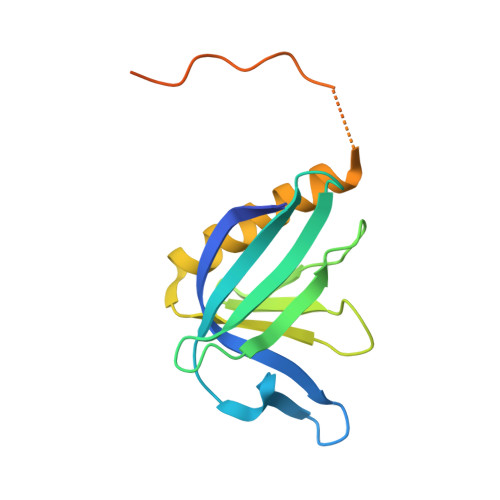Native proline-rich motifs exploit sequence context to target actin-remodeling Ena/VASP protein ENAH.
Hwang, T., Parker, S.S., Hill, S.M., Grant, R.A., Ilunga, M.W., Sivaraman, V., Mouneimne, G., Keating, A.E.(2022) Elife 11
- PubMed: 35076015
- DOI: https://doi.org/10.7554/eLife.70680
- Primary Citation of Related Structures:
7LXE - PubMed Abstract:
The human proteome is replete with short linear motifs (SLiMs) of four to six residues that are critical for protein-protein interactions, yet the importance of the sequence surrounding such motifs is underexplored. We devised a proteomic screen to examine the influence of SLiM sequence context on protein-protein interactions. Focusing on the EVH1 domain of human ENAH, an actin regulator that is highly expressed in invasive cancers, we screened 36-residue proteome-derived peptides and discovered new interaction partners of ENAH and diverse mechanisms by which context influences binding. A pocket on the ENAH EVH1 domain that has diverged from other Ena/VASP paralogs recognizes extended SLiMs and favors motif-flanking proline residues. Many high-affinity ENAH binders that contain two proline-rich SLiMs use a noncanonical site on the EVH1 domain for binding and display a thermodynamic signature consistent with the two-motif chain engaging a single domain. We also found that photoreceptor cilium actin regulator (PCARE) uses an extended 23-residue region to obtain a higher affinity than any known ENAH EVH1-binding motif. Our screen provides a way to uncover the effects of proteomic context on motif-mediated binding, revealing diverse mechanisms of control over EVH1 interactions and establishing that SLiMs can't be fully understood outside of their native context.
- Department of Biology, Massachusetts Institute of Technology, Cambridge, United States.
Organizational Affiliation:
















